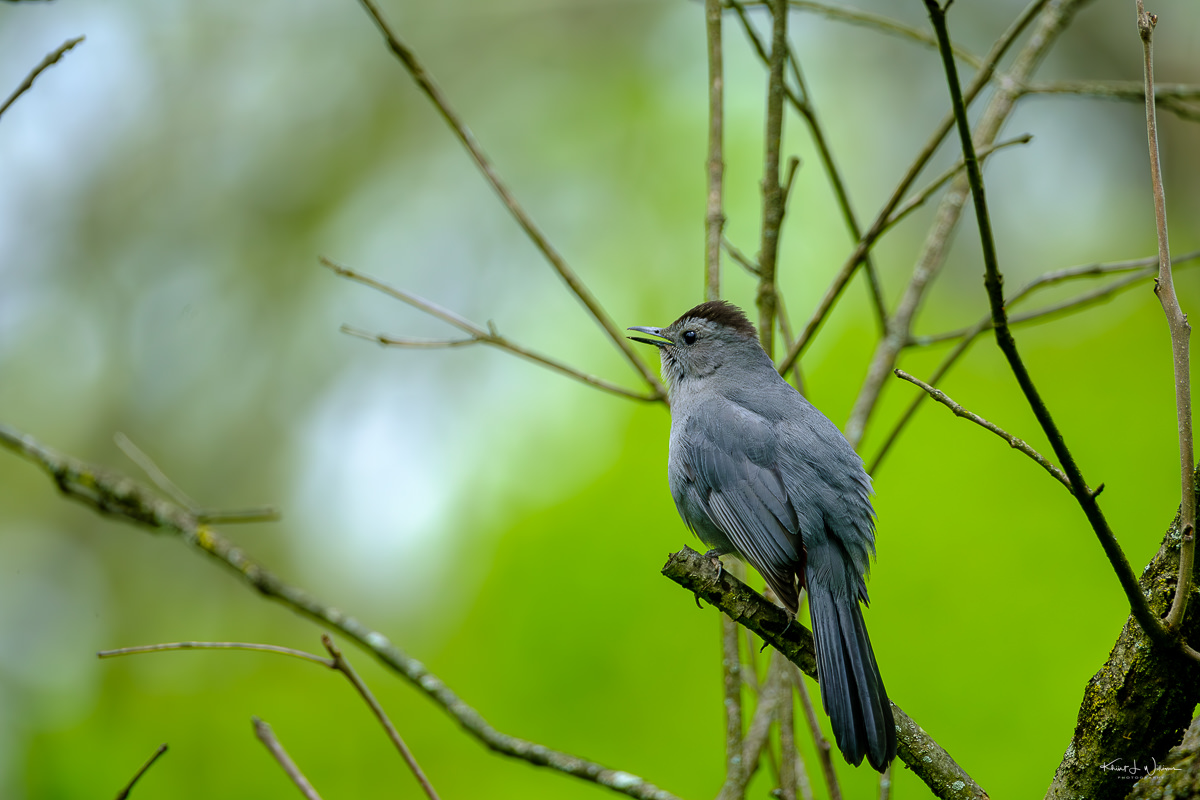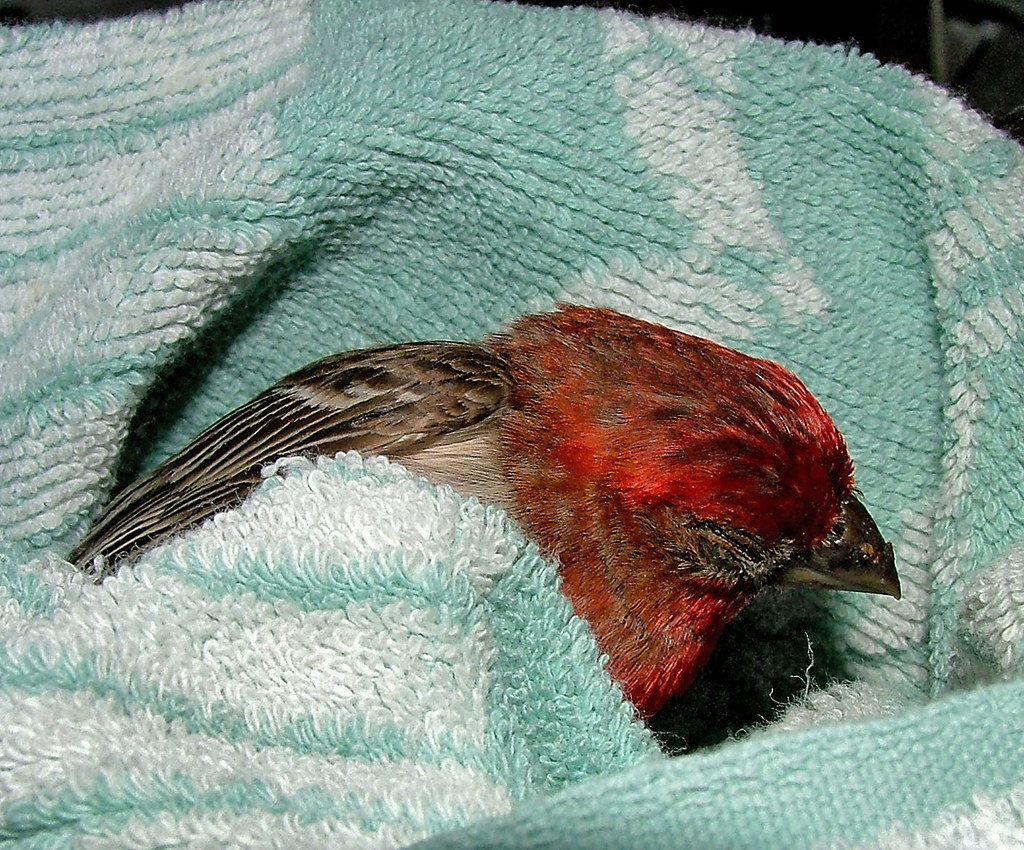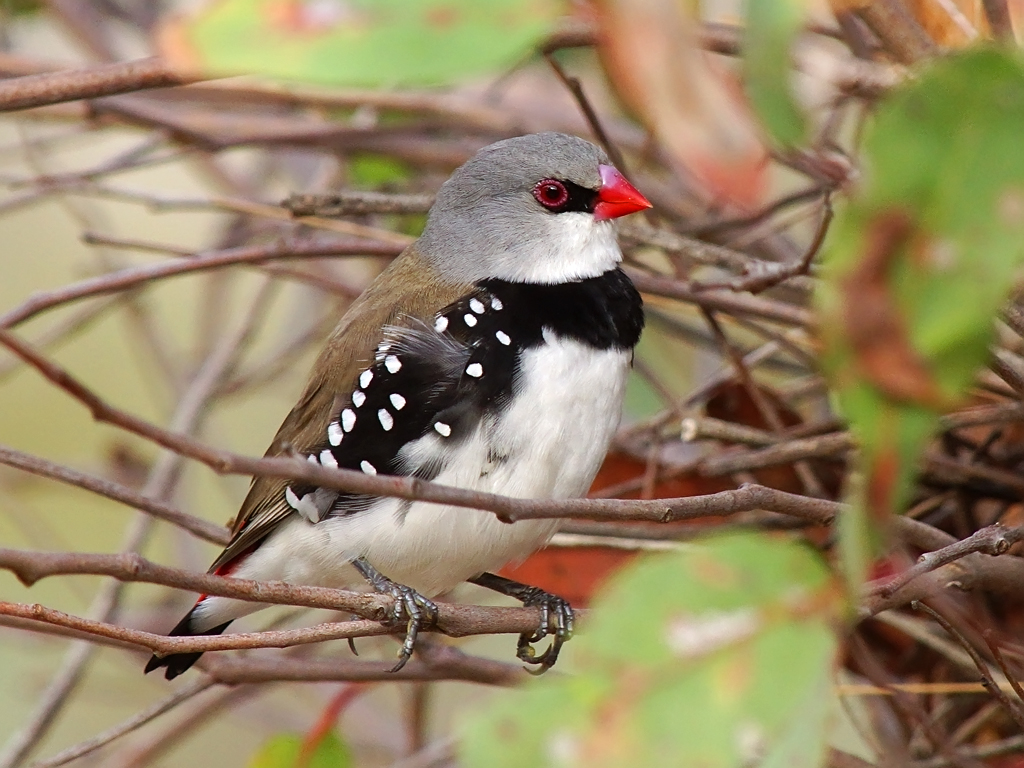Introduction: The Issue of Birds on Cars

Birds landing on cars can be frustrating and troublesome for car owners. The sight of bird droppings, scratches, and peck marks on a beloved vehicle can be disheartening. In this article, we will explore why birds rest on cars, the damage they can cause, and effective deterrents to keep them away.
The problem of birds landing on cars is not uncommon and can impact car owners in several ways. Bird droppings, for instance, are not only unsightly but can also be corrosive to car paint. Birds’ claws and beaks can cause scratches and peck marks on the car’s surface, potentially leading to costly repairs.
Car owners take pride in the appearance of their vehicles, and the presence of birds can diminish that sense of pride. The emotional impact of seeing a once immaculate car covered in bird droppings or damaged by bird activity should not be underestimated.
Birds are attracted to cars for different reasons. They may use them as convenient perches, seeking shelter or a vantage point to observe their surroundings. Insects attracted to the car’s surface can also serve as a food source for birds. Consequently, areas with abundant insect populations or natural habitats near parking spaces are more likely to experience this issue.
In the following sections, we will discuss why birds rest on cars, the damage they can cause, and various methods to deter them. By understanding the underlying reasons for this behavior and implementing effective deterrent strategies, car owners can protect their vehicles and maintain their appearance.
Why Do Birds Rest on Cars?

Birds resting on cars is a common sight that has puzzled many car owners. Understanding the reasons behind this behavior can shed light on why birds are attracted to cars and help us find effective ways to keep them away.
Attraction to Heat
Birds are often found perching on cars due to their attraction to heat. During colder weather, birds are drawn to the warmth that cars radiate. When vehicles are parked or have recently been in use, the engine and other components retain heat, making them appealing to birds seeking warmth and comfort.
Reflection and Perception
Birds may mistake the reflection of trees, sky, or other natural elements on the car’s shiny surface as a potential landing spot. They might perceive the car as a natural perch or a safe place to rest, unaware of the artificial nature of the reflection.
Seeking Shelter
In urban areas with limited green spaces, birds often resort to using cars as a substitute for trees or other structures that offer shelter. The compact spaces and crevices of parked cars provide protection from the elements, such as wind and rain, as well as potential predators.
Attracted to Food Sources
![]()
Birds may be drawn to cars if they associate them with a source of food. If a person frequently feeds birds from their car or leaves visible food remnants, birds can learn to associate cars with a potential food supply. This association can lead them to perch on cars in hopes of finding a meal.
Roosting Behavior
Certain bird species exhibit roosting behavior, gathering in large numbers in specific locations. If a significant number of birds are roosting in an area, they may also choose to rest on nearby cars due to limited available perching spots.
Habituation
Birds can become habituated to cars through repeated exposure. If they frequently encounter parked or stationary vehicles in their environment, they may begin to perceive them as familiar and safe resting spots. Habituation to cars can further reinforce their inclination to rest on or near vehicles.
Understanding the reasons why birds rest on cars allows us to explore effective strategies to discourage this behavior. In the following sections, we will discuss the damage caused by birds and various methods to keep them away from your car.
The Damage Caused by Birds
Birds can cause significant damage to cars, both aesthetically and structurally. Understanding the potential harm they can inflict is essential in highlighting the importance of keeping birds away from your vehicle.
Paint Damage

One of the most common issues caused by birds is paint damage. Bird droppings contain uric acid, which is highly corrosive to car paint. When left unattended, the acid can eat through the protective clear coat and underlying layers of paint. Regular exposure to bird droppings can worsen the damage, making it more challenging to restore the car’s appearance.
Scratches and Scuffs
Birds perching on cars may inadvertently scratch the surface with their claws or beaks. These scratches can range from minor blemishes to deeper marks that penetrate the paint layer. Over time, the cumulative effect of these scratches can significantly reduce the car’s resale value and require costly repairs.
Window and Mirror Damage
Birds flying into windows or mistaking reflective surfaces for territorial threats can collide with them. These collisions can lead to cracked or shattered windows and damaged mirrors. Repairing or replacing windows and mirrors can be expensive, and the damage may extend beyond the glass itself.
Clogged Vents and Drainage Systems
Nests or debris deposited by birds can clog vents, grilles, and drainage systems of cars. This obstruction can impede proper airflow and compromise the functioning of essential components such as the engine or air conditioning. Regular maintenance and cleaning are necessary to prevent these complications and ensure optimal vehicle performance.
Interior Damage
If birds gain access to the interior of a car, they can cause considerable damage. They may tear upholstery, scratch surfaces, defecate, or leave behind feathers and other debris. Interior damage not only affects the aesthetics of the vehicle but may also lead to unpleasant odors and require extensive cleaning or replacement of affected components.
Understanding the various types of damage caused by birds emphasizes the need to take proactive measures to keep them away from your car. In the next section, we will explore effective strategies and deterrents that can help prevent birds from perching and causing harm to your vehicle.
What Can You Do to Keep Birds Away from Your Car?

Birds resting on cars can be a nuisance, but there are effective methods to keep them away. By utilizing visual, chemical, and audio deterrents, you can discourage birds from landing on your vehicle and prevent potential damage.
Use Visual Deterrents
Visual deterrents aim to scare or confuse birds, making them avoid your car. Consider implementing the following strategies:
- Hang reflective objects such as CDs, aluminum foil strips, or wind chimes near your car. The movement and reflections created by these objects can startle birds and deter them from landing.
- Install scarecrows or owl decoys near your car. Birds perceive them as potential predators, prompting them to stay away.
- Utilize bird scare balloons or kites. The unusual shapes and erratic motion of these deterrents can effectively deter birds from approaching your car.
Use Chemical Deterrents
Chemical deterrents create unpleasant or unsafe conditions for birds, discouraging them from landing on your car. Consider the following options:
- Apply bird repellent sprays or gels to your car’s surfaces. These products typically contain non-toxic substances that birds find unpleasant or irritating.
- Consider bird spikes or sticky repellent strips on areas where birds tend to perch or roost. These physical barriers make it uncomfortable for birds to land, effectively deterring them from your car.
Use Audio Deterrents
Audio deterrents utilize sound to discourage birds from landing on your car. Employ the following techniques:
- Utilize ultrasonic devices that emit high-frequency sound waves irritating to birds but inaudible to humans.
- Play predator calls or distress sounds of birds to scare them away. Specialized devices are available for this purpose.
- Consider motion-activated devices that emit loud noises or sudden bursts of sound when birds approach.
Implementing a combination of visual, chemical, and audio deterrents can significantly reduce bird activity around your car, protecting it from potential damage and inconveniences caused by bird droppings. Experiment with different methods to find the most effective solution for your specific situation.
Pros and Cons of Different Deterrents

When it comes to keeping birds away from your car, there are various deterrent options available. Each type of deterrent has its own set of advantages and disadvantages. In this section, we will explore the pros and cons of different deterrents to help you make an informed decision.
Visual Deterrents

Visual deterrents rely on visual cues to deter birds from landing on cars. Here are the pros and cons of using visual deterrents:
Pros
- Effectiveness: Scarecrows, reflective tape, and decoy predators can effectively deter birds from landing on cars, creating an intimidating environment.
- Ease of Installation: Visual deterrents are generally easy to install and can be easily attached or placed on your car.
- Affordability: Most visual deterrents are relatively inexpensive, offering a cost-effective solution.
- Flexibility: Visual deterrents can be moved around or adjusted to target specific spots where birds tend to perch.
Cons
- Habituation: Birds may become accustomed to visual deterrents over time, reducing their effectiveness.
- Weather Dependence: Some visual deterrents may not work well in certain weather conditions, such as heavy rain or wind.
- Aesthetics: Visual deterrents may not be suitable for all car owners who prefer a more aesthetically pleasing solution.
Auditory Deterrents
Auditory deterrents use sound to discourage birds from landing on cars. Let’s explore the pros and cons of using auditory deterrents:
Pros
- Sound-based Repellents: Auditory deterrents emit sounds that birds find unpleasant, effectively deterring them.
- Wider Coverage: Auditory deterrents can cover a larger area compared to visual deterrents.
- Adjustable Frequencies: Some auditory deterrent devices offer adjustable sound frequencies, enhancing their effectiveness.
Cons
- Habituation: Birds may habituate to the sounds emitted by auditory deterrents over time, reducing their effectiveness.
- Noise Disturbance: Auditory deterrents may disturb humans or pets living nearby.
- Preference for Quiet Environment: Auditory deterrents may not be suitable for all car owners who prefer a quieter environment.
Physical Barriers
Physical barriers, such as car covers or nets, provide a physical obstacle between birds and your car. While not explicitly mentioned in the research notes, it’s worth considering physical barriers as an additional option to deter birds from landing on your vehicle.
By understanding the pros and cons of different deterrent options, you can select the most suitable method to keep birds away from your car. In the next section, we will delve into the benefits of actively preventing birds from resting on your vehicle.
The Benefits of Keeping Birds off Your Car

Keeping birds off your car offers a multitude of advantages, ranging from preserving its appearance and resale value to preventing potential damage and health hazards. By implementing effective deterrent measures, you can enjoy the following benefits:
1. Prevents Paint Damage
Bird droppings possess acidic properties that can harm your car’s paintwork. Over time, these droppings can eat into the clear coat and paint, resulting in discoloration, etching, and corrosion. By actively keeping birds away, you protect your car’s exterior and maintain its aesthetic appeal.
2. Reduces Cleaning and Maintenance

Preventing birds from perching and leaving droppings on your vehicle significantly reduces the frequency and effort required for cleaning and maintenance. This saves you valuable time and energy while keeping your car in pristine condition.
3. Preserves Resale Value
Bird droppings have the potential to leave permanent stains and damage the paint, diminishing the resale value of your vehicle. By proactively keeping birds away, you preserve the appearance and value of your car, ensuring a higher resale price in the future.
4. Prevents Nesting and Damage
Discouraging birds from nesting on your car helps prevent unnecessary damage and costly repairs. Nesting materials can accumulate and clog drains, vents, and other car parts, leading to potential mechanical issues. By keeping birds away, you ensure the smooth functioning of your vehicle.
5. Avoids Health Hazards
Bird droppings can harbor bacteria, parasites, and fungi that pose health risks to humans. By keeping birds off your car, you minimize the chances of coming into contact with these health hazards, creating a safer environment for both you and your passengers.
In conclusion, the benefits of keeping birds off your car are numerous. By implementing effective deterrent measures, you can prevent paint damage, reduce cleaning and maintenance efforts, preserve the resale value of your vehicle, prevent nesting and potential damage, and avoid health hazards associated with bird droppings. Taking proactive steps to keep birds away from your car not only enhances its appearance and longevity but also contributes to your overall well-being.
Conclusion


Birds resting on cars can be a nuisance and cause significant damage to both the vehicle and its occupants. Throughout this article, we explored the reasons why birds are attracted to cars, the potential harm they can inflict, and various methods to deter them.
Bird droppings can wreak havoc on a car’s paintwork, leading to unsightly stains and corrosion. Moreover, these droppings contain acidic compounds that can deteriorate the paint and damage the underlying metal. Additionally, the presence of birds near vehicles can pose health risks due to potential disease transmission through their droppings.
To keep birds away from your car, we discussed several effective strategies. Visual deterrents, such as reflective objects or predator decoys, can create an unappealing environment for birds. Chemical deterrents like bird repellent sprays or coatings can discourage birds from landing on the vehicle. Furthermore, audio deterrents, including ultrasonic devices or bird distress calls, can disrupt their comfort and discourage roosting.
Each deterrent method has its pros and cons. Visual deterrents are affordable and easy to implement, but their effectiveness may vary depending on bird species and familiarity. Chemical deterrents can provide long-lasting protection but require periodic reapplication. Audio deterrents offer a non-intrusive solution but may not be effective against all bird species.
Consistently applying the recommended techniques will yield the best results in keeping birds off your car. Regular car maintenance, such as promptly cleaning and waxing the vehicle, is crucial to remove any bird droppings and protect the car’s surface from potential damage.
In conclusion, we encourage you to be patient and persistent in your efforts to keep birds off your car. By taking proactive measures and implementing the discussed solutions, you can effectively deter birds from landing and nesting on your vehicle. Share your experiences and tips in the comments section below and stay connected by subscribing to our blog for more valuable content.
Protect your car, protect your investment, and enjoy a bird-free driving experience. Together, let’s ensure that our cars remain beautiful and bird-free for years to come.
Resources for Deterring Birds

To effectively deter birds from your car, consider the following resources:
Bird Deterrent Products
- Reflective Scare Tape: Hang strips of tape that reflect light, creating unsettling movement for birds.
- Bird Spikes: Install spikes on areas where birds perch to prevent them from landing.
- Bird Netting: Physically block birds from reaching your car by using netting.
- Decoy Predators: Scare birds away by placing fake owls or snakes near your car.
- Ultrasonic Devices: Emit high-frequency sounds that birds find uncomfortable.
- Bird Repellent Sprays: Apply sprays on your car’s surfaces to deter birds from landing or perching.
Home Remedies
- Aluminum Foil: Create a reflective barrier by placing foil on your car’s windshield or other surfaces.
- CDs or DVDs: Hang old discs near your car to create flashes of light that can deter birds.
- Mothballs: Repel birds with the strong odor of strategically placed mothballs.
- Citrus or Chili Peppers: Birds dislike the scent and taste of citrus fruit or chili pepper powder.
General Tips
- Park in Covered Areas: Minimize bird encounters by parking in garages or carports.
Experiment with these methods to find the ones that work best for your situation. Consider the effectiveness, ease of use, and potential harm to birds or the environment. Strive for a balance between protecting your car and respecting the natural behaviors and habitats of birds.
By implementing effective bird deterrent measures, you can enjoy a clean, undamaged car while fostering harmony between humans and the avian world.
Conclusion
Birds resting on cars can be a nuisance and cause damage to the vehicle’s exterior. Understanding why birds rest on cars and the potential harm they can inflict is crucial in finding effective solutions.
Utilize various deterrent methods like visual, chemical, and audio techniques to discourage birds from landing or perching on your car. Reflective scare tape, bird spikes, bird netting, decoy predators, ultrasonic devices, and bird repellent sprays are available products that can help keep birds away.
Additionally, alternative solutions include aluminum foil, CDs or DVDs, mothballs, and citrus or chili peppers. Parking in covered areas whenever possible can also minimize bird encounters.
By utilizing these resources and techniques, you can protect your car from bird-related damage and maintain its appearance. Consider the pros and cons of each method while aiming for effective deterrence and environmental responsibility.
Remember, the goal is not to harm birds but to create a peaceful coexistence between humans and our feathered friends. With proper bird deterrent measures in place, you can enjoy a bird-free car and contribute to a harmonious relationship with the avian world.
Resources:
- Reflective Scare Tape
- Bird Spikes
- Bird Netting
- Decoy Predators
- Ultrasonic Devices
- Bird Repellent Sprays
- Aluminum Foil
- CDs or DVDs
- Mothballs
- Citrus or Chili Peppers
Frequently Asked Questions
How can I keep birds off my car?
There are several effective methods to keep birds off your car. You can use visual deterrents such as reflective objects, scarecrows, or owl decoys. Chemical deterrents like bird repellent sprays or sticky strips can also be effective. Additionally, audio deterrents that emit high-frequency sounds or predator calls can help keep birds away.
Will bird spikes damage my car?
Bird spikes are designed to be safe for cars. They are typically made of harmless materials like plastic or stainless steel. When installed correctly, they create a physical barrier that discourages birds from landing on your car without causing damage.
Do ultrasonic devices really work in deterring birds?
Ultrasonic devices emit high-frequency sounds that are irritating to birds but inaudible to humans. While they can be effective in deterring some bird species, their effectiveness may vary depending on the specific situation and bird behavior. It’s recommended to use them in combination with other deterrent methods for better results.
Can I use homemade remedies to keep birds off my car?
Yes, there are several homemade remedies that can help deter birds from landing on your car. These include hanging aluminum foil, CDs or DVDs, or using strong-smelling substances like mothballs or citrus fruit. While these remedies may work to some extent, their effectiveness can vary, and it’s important to consider the potential harm to the environment and birds.
Are there any long-term solutions to keep birds off my car?
Implementing a combination of deterrent methods and regularly maintaining your car can provide long-term protection against birds. This includes periodically reapplying bird repellent sprays, adjusting and replacing visual deterrents, and consistently using audio deterrents. It’s important to remain vigilant and adapt your deterrent strategies as needed to keep birds away from your car.


Leave a Reply